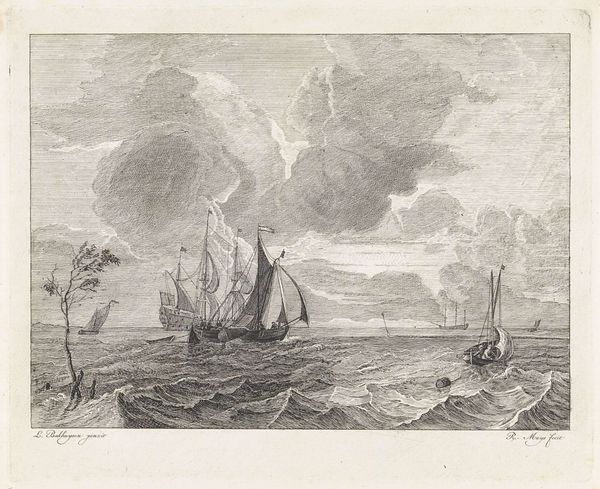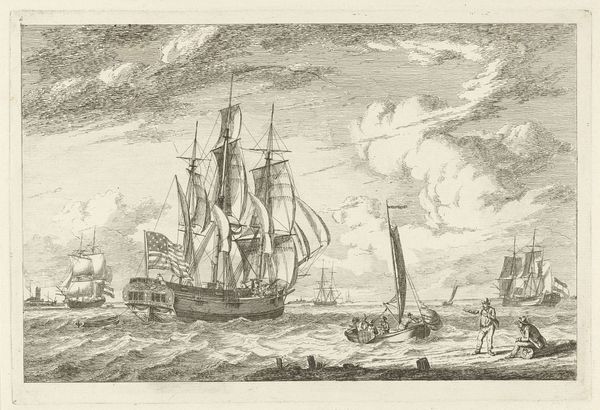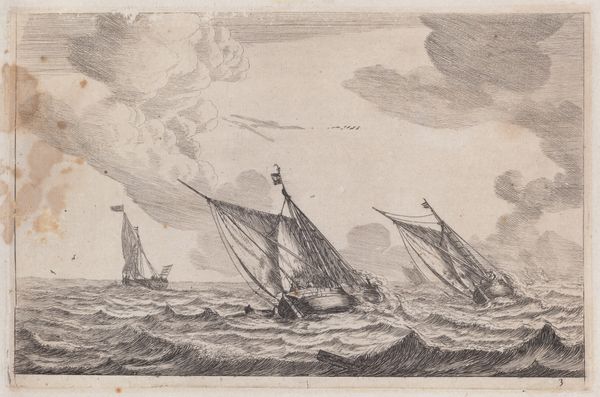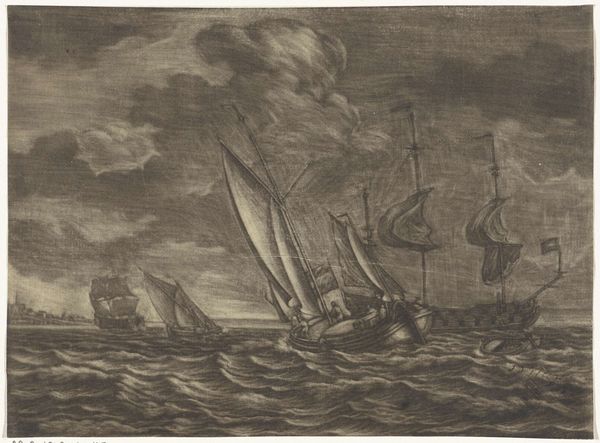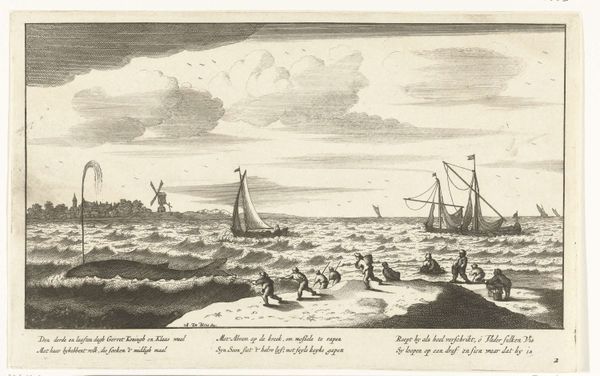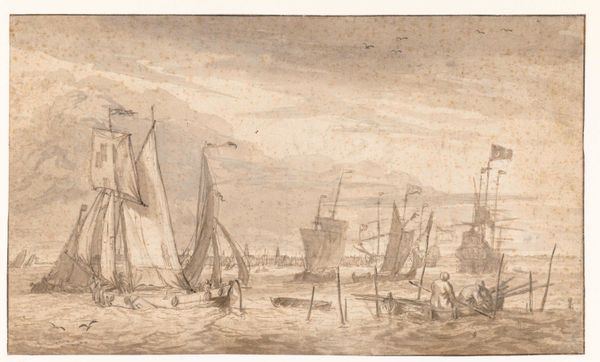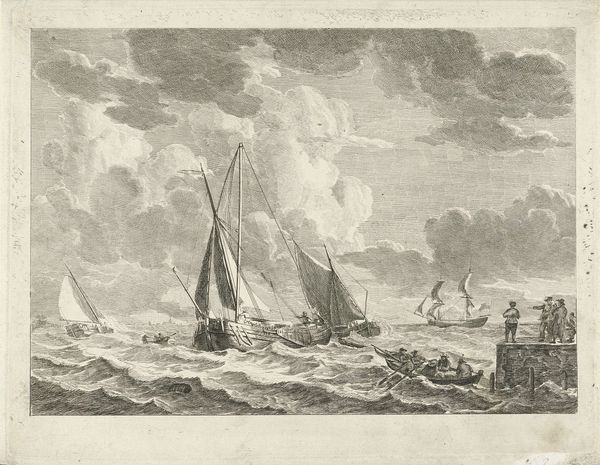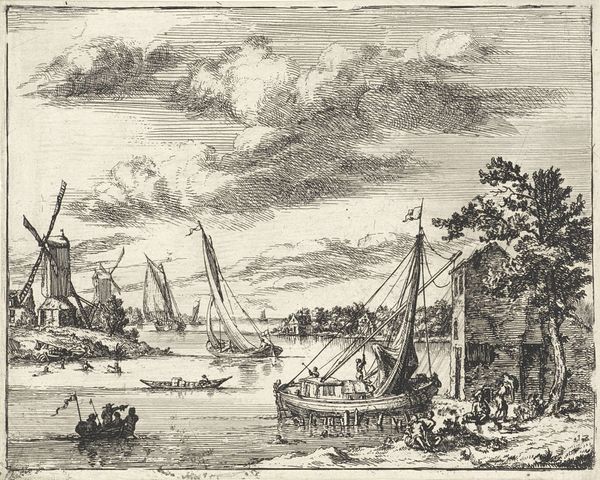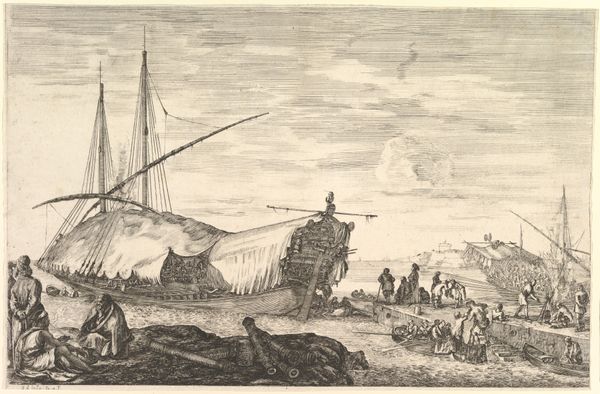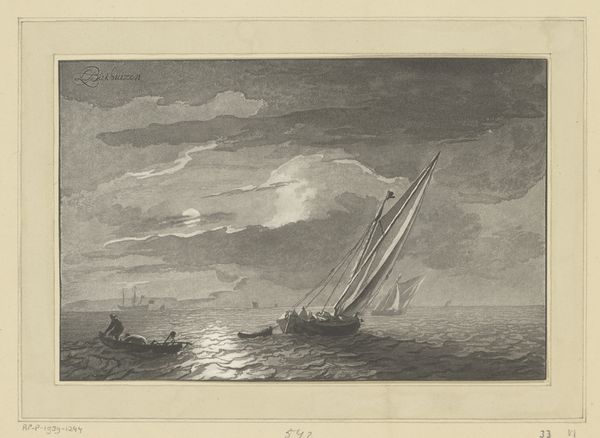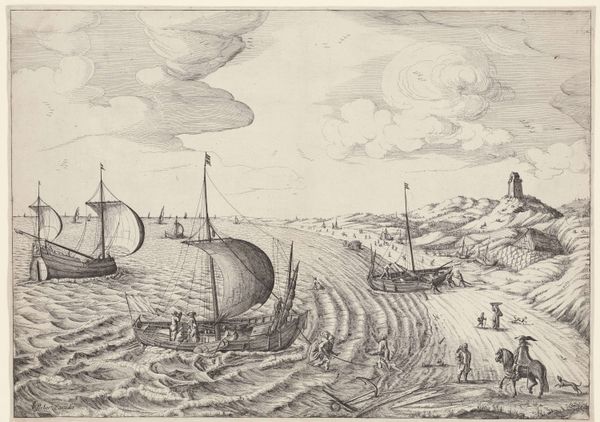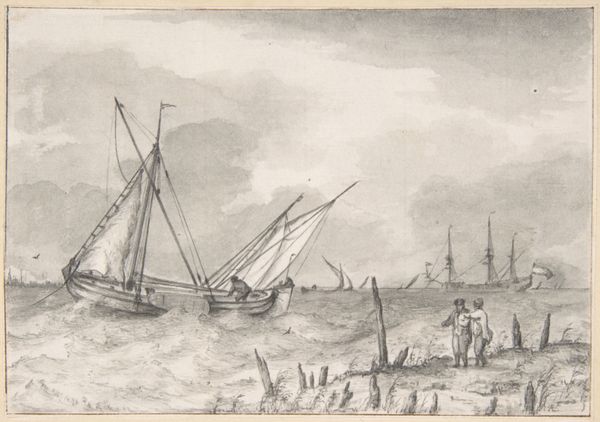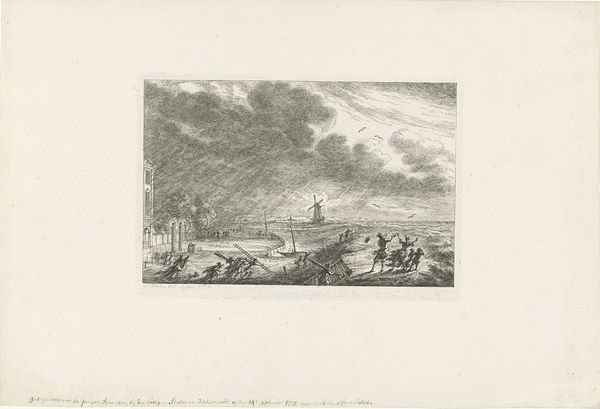
drawing, print, etching, engraving
#
drawing
#
dutch-golden-age
# print
#
etching
#
old engraving style
#
landscape
#
figuration
#
line
#
cityscape
#
engraving
#
realism
Dimensions: Sheet: 7 5/8 x 11 9/16 in. (19.4 x 29.4 cm)
Copyright: Public Domain
Editor: Here we have "Riverscape with Boats," a print dating sometime between 1568 and 1629, made with etching and engraving techniques by Aegidius Sadeler II. It's incredibly detailed. All those tiny lines giving us texture… I wonder, what stands out to you when you look at this work? Curator: Immediately, I see the incredible labor involved in creating such detail through engraving and etching. Think of the number of passes, the physical exertion… Each line represents time and energy invested in depicting not just the scene, but also the economic activities it represents: trade, transport, and perhaps even fishing. How does understanding the materiality of this work—the copper plate, the ink, the paper—shift your perception? Editor: It makes me think about access, actually. Prints made art accessible. Were these types of landscapes popular among a new merchant class? Curator: Precisely! Consider the rise of the Dutch Golden Age. The material reality is that there's an explosion of wealth and with it, a demand for images, a burgeoning market sustained by those engaged in overseas trade, visible on that very water. Do you see how the production and distribution of images mirror the dynamics depicted within them? The water becomes a means of cultural and material exchange. Editor: That makes perfect sense. So, instead of just seeing a pretty picture of boats, we are also seeing the infrastructure of trade, both literally in the scene, and in the printmaking process. It gives you so much more context. Curator: Indeed! We learn to look at art not as a detached aesthetic object, but as a product deeply embedded in social and economic realities. Each etched line tells a story of labor, trade, and material culture.
Comments
No comments
Be the first to comment and join the conversation on the ultimate creative platform.
